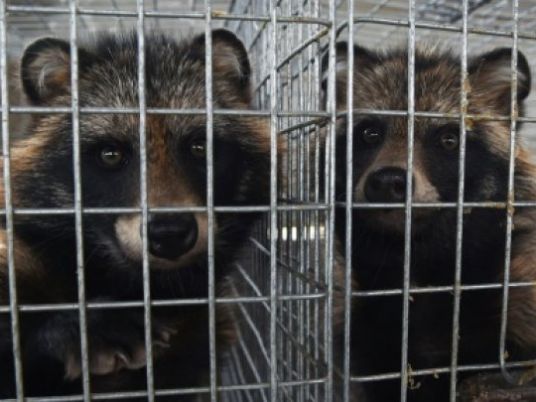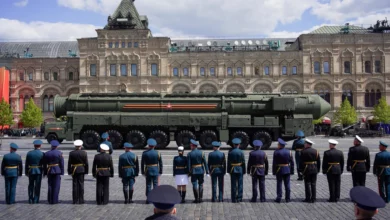
China's proposed Winter Olympics co-host boasts pristine ski slopes carpeted with artificial snow, but the city once dubbed the country's "fur capital" is also home to tens of thousands of caged rabbits and mink bred for their skins.
The Chinese bid, the favourite to win the right to host the 2022 games on Friday, combines ice sports in Beijing with skiing events in Zhangjiakou, some 200 kilometres (120 miles) north of the capital.
Described by the bid committee as "ideal for snow sports", the city was better known for producing furs under the Qing dynasty that ended a century ago and the industry still employs at least 70,000 people in the area.
It will generate more than five billion yuan (US$800 million) of business this year, provincial officials say, and includes more than 1,500 firms processing pelts into products.
The Zhangjiakou city government, which subsidizes the sector, said on its website the breeding of fur animals has reached a "high water mark", with new projects emerging as fast as "bamboo shoots after spring rain".
On one farm on the city's outskirts, hundreds of mink, rabbits and foxes were packed into rows of wire cages barely large enough for them to pace around.
Several of them had empty water bowls when AFP visited in baking summer heat, with feces piled up beneath the cages while a fetid smell hung in the air.
"Zhangjiakou is a famous place for fur production," said owner Wang Yonglin. "We breed the animals ourselves. It has been very lucrative."
'Warm and fashionable'
Prospects for fur makers seemed bleak in the 1990s, as a backlash over animal cruelty led some countries to ban production and supermodels posed with the slogan "I'd Rather Go Naked Than Wear Fur".
But today mink and fox fur are regulars at the world's top fashion shows and the global trade is worth more than $40 billion, according to industry estimates.
China has emerged as the world's biggest exporter of fur clothing and accessories, a boon to European raw material suppliers such as Denmark, where a third of exports to Asia's largest economy are skins.
Europe produced 41.2 million mink in 2014, according to industry group Fur Europe, whose spokesman Mick Madsen told AFP: "As a general rule, 80 percent of European fur production goes to China".
Most firms in the Zhangjiakou area are manufacturers using pelts from elsewhere, although one of its fur farms boasts 32,000 rabbits.
The Yangyuan International Fur City mall in the municipality describes itself as a "goldmine for wealthy fur traders" and has more than 30,000 square meters (36,000 square yards) of floor space packed with shops selling mink coats and fox scarves.
Next door a government-funded museum celebrates the industry's history, dating back to prehistoric times.
Both Zhangjiakou's mayor and its more powerful Communist Party secretary have visited the mall, and its CEO Felix Wang said it was "packed" with buyers from China and abroad during the winter peak season.
"Chinese people love to wear mink," he said. "First because it's warm and secondly because it's fashionable."
'Torturing' animals
Animal rights groups widely oppose the fur industry, and have shot footage apparently showing animals in European fur farms that have eaten each other's tails, or live on piles of excrement.
The Spanish parent company of high street chain Zara said in February it had stopped selling angora garments after campaign group PETA released videos of Chinese fur farm employees apparently pulling out hair from screeching live rabbits.
China has no laws protecting non-endangered animals, although industry regulations state that cages for mink should be well cleaned and at least 60 centimeters (24 inches) long, 30 cm wide and 45 cm high.
European fur firms "have moved production to China to serve their interests, exploiting the lack of animal protection laws and low consciousness of animal protection", said Zhang Yuanyuan of ACT Asia's China office, part of the country's small but growing animal protection movement.
"I hope if awarded the Winter Olympics Zhangjiakou will take the opportunity to change and reform this cruel industry," she said.
Producers in the city insisted their fur came from animals that have been killed before being skinned, usually by electrocution or lethal injection, and farm owner Wang said the business differed little from the meat industry.
PETA Asia's vice president Jason Baker said having the Olympics in Zhangjiakou could "help modernize the city while doing away with an industry that profits from suffering".
"I think both the International Olympic Committee and the Chinese government know that there is no future in the fur industry," he added.
But local officials see both the fur trade and Olympics as opportunities for development, and Wang described the games as "a great opportunity for us".
"This county was poor 30 years ago, now there are BMWs everywhere," he said. "Holding the Olympics will encourage more people to come here and buy fur."




